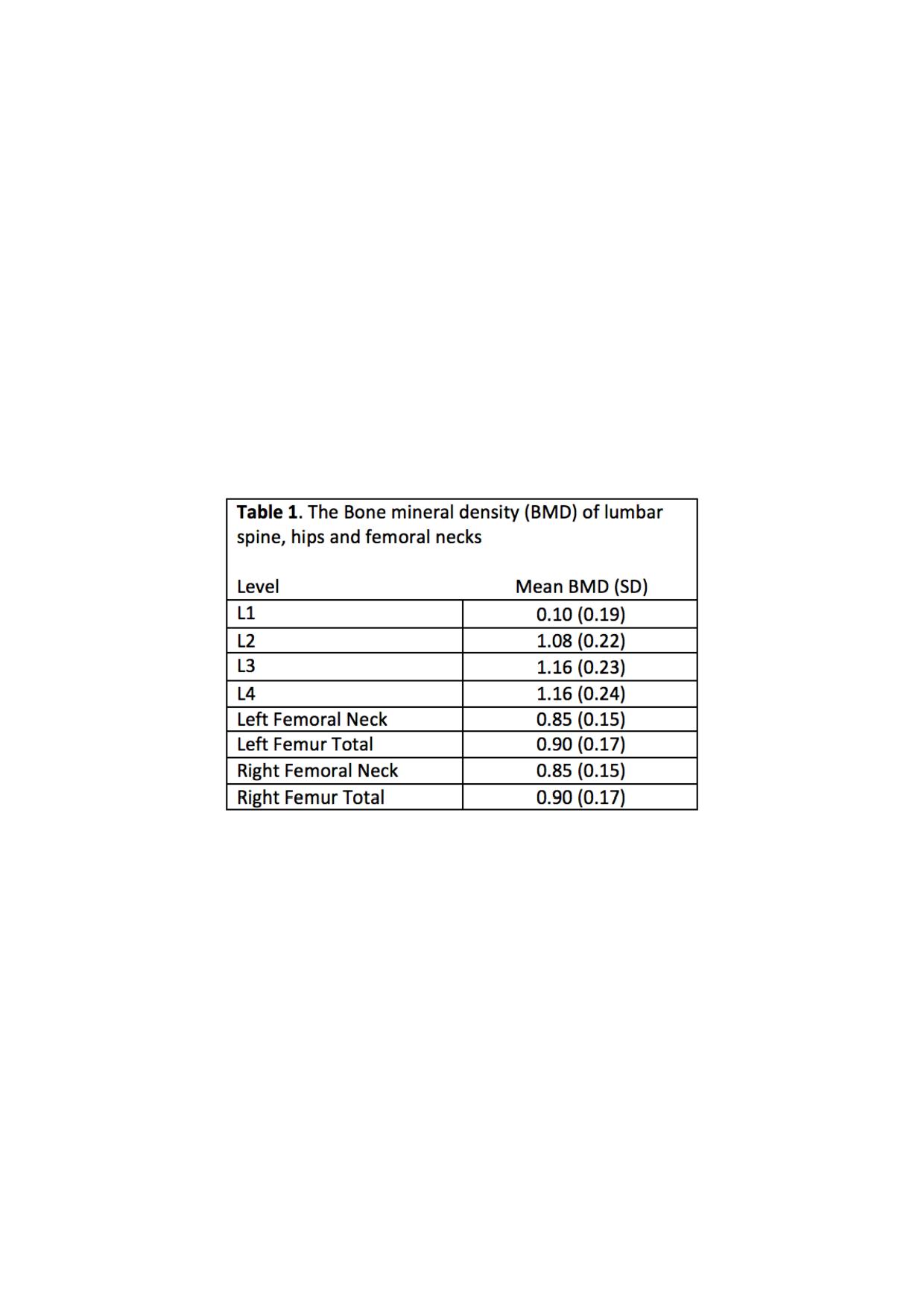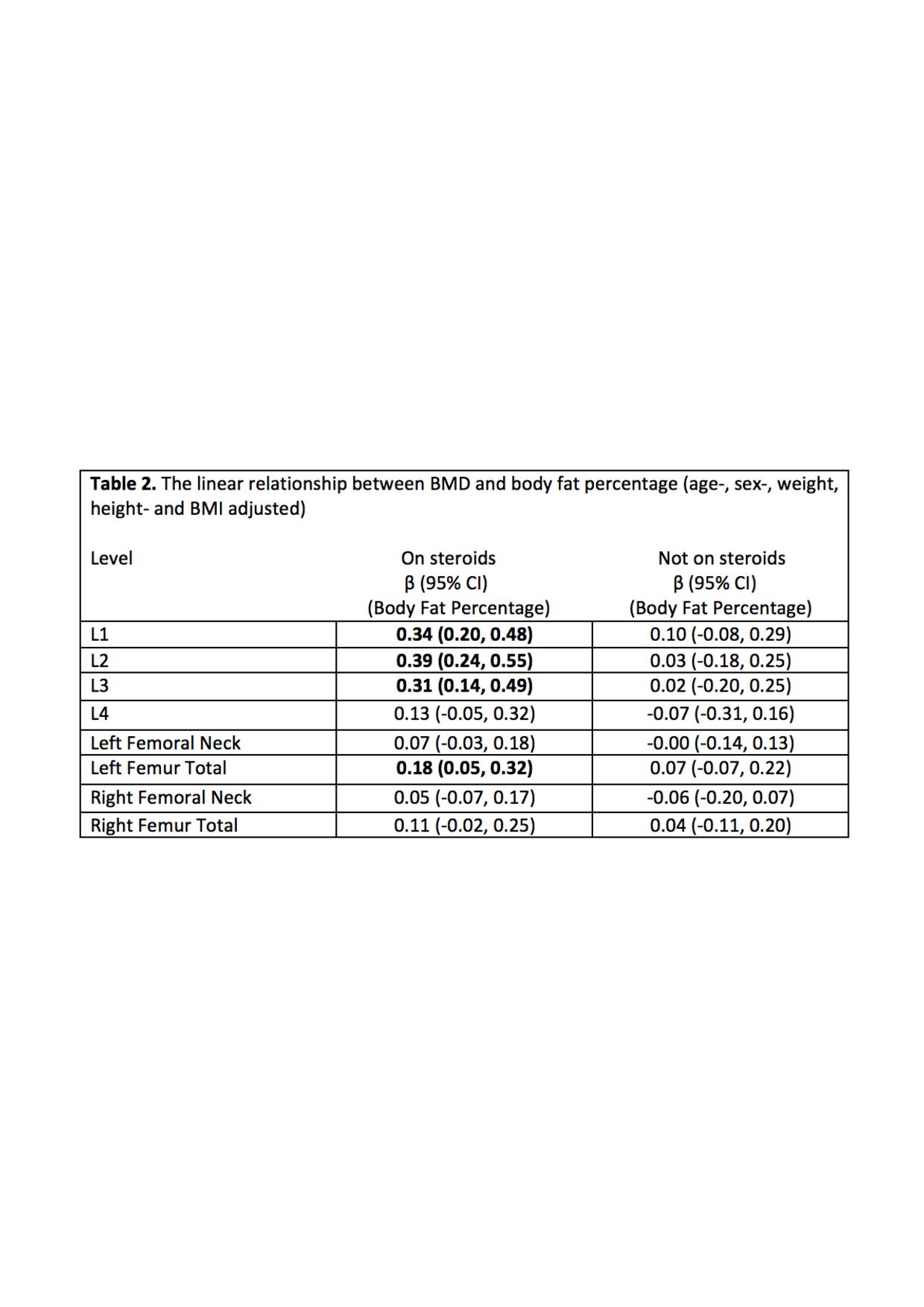Session Information
Session Type: Poster Session A
Session Time: 9:00AM-11:00AM
Background/Purpose: Currently, Dual-Energy X-ray Absorptiometry (DEXA) scans are used to determine fracture risk by calculating Bone Mineral Density (BMD). It is well established that body weight is one of the strongest predictors of bone mass, but there is ongoing controversy as to whether fat mass is a better predictor of bone density. Our research set out to find out whether there is association between body fat percentage and BMD in patients with rheumatoid arthritis stratified by steroid use.
Methods: Data were used from a cohort of rheumatoid arthritis (RA) patients referred for DEXA scan to a District General Hospital between 2004 and 2010. The following were recorded: age, sex, weight, height, body mass index (BMI), BMD at L1-L4, BMD at femoral neck (left and right) and BMD at hip (left and right). Multivariate linear regression was used to identify associations between body fat percentage and BMD at L1, L2, L3, L4, right neck of femur and left neck of femur in RA patient on steroids or not. Data was adjusted for age, sex, weight, height and BMI at scan.
Results: 1,527 patients were used in the study. 79% were female and mean age was 64.3 years (SD 11.6). Mean height was 1.62 m (SD 8.57), mean weight was 71.6 kg (SD 16.4 SD) and mean BMI was 26.8 kg/cm2 (SD 5.2). The results of BMD are presented in Table 1. The results of the linear regression analysis of the relationships between fat percentage and BMD at each level are presented in the Table 2.
To cite this abstract in AMA style:
Madenidou A, Bukhari M. The Relationship Between Body Fat Percentage and Bone Mineral Density in Rheumatoid Arthritis Patients [abstract]. Arthritis Rheumatol. 2020; 72 (suppl 10). https://acrabstracts.org/abstract/the-relationship-between-body-fat-percentage-and-bone-mineral-density-in-rheumatoid-arthritis-patients/. Accessed .« Back to ACR Convergence 2020
ACR Meeting Abstracts - https://acrabstracts.org/abstract/the-relationship-between-body-fat-percentage-and-bone-mineral-density-in-rheumatoid-arthritis-patients/


